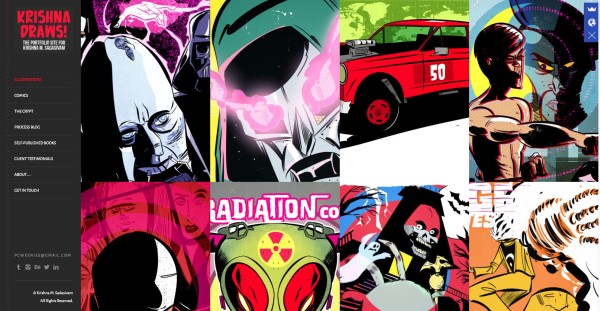How to Get Your Online Design Portfolio Noticed
I’m not arguing the merits or demerits of keeping an online portfolio.
Suffice to say, having an online portfolio is a must for anyone who works as a visual artist (illustrator, graphic designer, animator, storyboard artist, etc.). While a few companies still prefer physical materials (portfolio books, DVDs, and (gasp!) VHS tapes), the majority of companies and clients I’ve come into contact with prefer viewing a candidate’s portfolio online.
Having an online portfolio is only a start. The challenge for many artists, I feel, is keeping the content up to date and the look and feel of the site fresh and inviting. A site that updates regularly also has a better chance of getting indexed by Google regularly – which helps improve its chances of being found.
Unfortunately, I’ve seen many, many portfolio sites that lay fallow after an initial launch – from students to industry veterans alike.
I have a few theories as to why portfolio sites remain stagnant.
- The artist is well known / established and gets a stream of regular work through other channels via their network of peers, word-of-mouth through clients, etc.
- The artist doesn’t have time to regularly update their website (see 1).
- The artist has stopped producing work and altogether abandoned his/her craft.
- The portfolio site is too cumbersome / difficult to update.
- The artist doesn’t have proper access to update the site because it’s being maintained by a gate-keeper (See 4).
Of the items above, points 4 and 5 are of particular interest to me. If a portfolio site is difficult to update, then the odds are very likely that it won’t get updated with new content. Many of the artists I’ve spoken with don’t want anything to do with the hassle and complexities of coding / maintaining their own site. They want an easy to use, turn-key system that lets them focus on creating their work.
I think this is the reason why sites like Dribbble, Tumblr and Instagram are so popular among visual artists. These social media services have a very low initial learning curve. I would argue that a stand-alone portfolio site with hosting is a better choice compared to a site built on a social media platform. If a social media site goes belly up, so does your portfolio. With a stand-alone site you won’t have to worry about who owns your work; it’s yours.
I use WordPress with a purchased theme for my portfolio site. While WordPress has made great strides in terms of its usability, it still requires some technical skill to get it up and running. Once it’s set up, though, I’ve found it very easy to add new content to keep things fresh.
Let me give the TLDR version. Here are some methods I’ve used to get my online portfolio site noticed by others. These methods worked for me. Of course, your mileage may vary:
- Make sure that your image galleries are large, clean, and easy to update.
- Start off with the work, whether it’s your demo reel or illustration work.
- Make contact information ridiculously easy to find on your site.
- Maintain a blog and use it to regularly share your works in progress AND provide tips and relevant tutorials on your workflow.
- Add your portfolio site’s URL to your e-mail signature.
- Design your site for your prospective clients, not for yourself. It should be intuitive to use and easy to get at the good stuff (see #2)
- Add Social Share buttons to your site, but don’t go overboard.
- Set up an About.me page and link it back to your portfolio site.
- Include links to your portfolio site on Twitter, LinkedIn, and Facebook.
- Curate and replace old work with new as often as you can.
- Engage with other people outside your circle of artist friends.
- Think of your website as a picture frame, housing your work. If the picture frame is too busy, it will distract from the work being shown.
Agree? Disagree? Share your comments below.





No comments yet. Be the first!